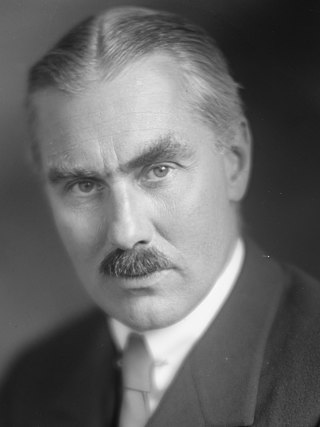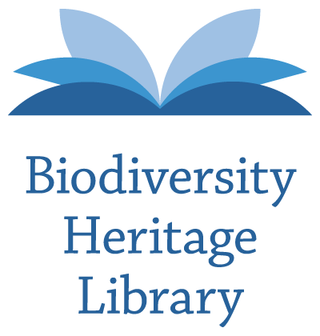
Joseph Clark Grew was an American career diplomat and Foreign Service officer. He is best known as the ambassador to Japan from 1932 to 1941 and as a high official in the State Department in Washington from 1944 to 1945. He opposed American hardliners, sought to avoid war, and helped to ensure the soft Japanese surrender in 1945 that enabled a peaceful American occupation of Japan after the war.

The National Cherry Blossom Festival is a spring celebration in Washington, D.C., commemorating the March 27, 1912, gift of Japanese cherry trees from Mayor Yukio Ozaki of Tokyo City to the city of Washington, D.C. Ozaki gave the trees to enhance the growing friendship between the United States and Japan and also celebrate the continued close relationship between the two nations. Large and colorful helium balloons, floats, marching bands from across the country, music and showmanship are parts of the Festival's parade and other events.

The Adelaide Botanic Garden is a 51-hectare (130-acre) public garden at the north-east corner of the Adelaide city centre, in the Adelaide Park Lands. It encompasses a fenced garden on North Terrace and behind it the Botanic Park. Work was begun on the site in 1855, with its official opening to the public on 4 October 1857.

The Chicago Botanic Garden is a 385-acre (156 ha) botanical garden situated on nine islands in the northern Cook County Forest Preserves. It features 27 display gardens and five natural habitats including Mary Mix McDonald Woods, Barbara Brown Nature Reserve, Dixon Prairie, the Skokie River Corridor, and the Lakes and Shorelines. The garden is open every day of the year. An admission fee has been approved to start in 2022, not to exceed $35.

Yukio Ozaki was a Japanese politician of liberal signature, born in modern-day Sagamihara, Kanagawa. Ozaki served in the House of Representatives of the Japanese Diet for 63 years (1890–1953). He is still revered in Japan as the "God of constitutional politics" and the "father of the Japanese Constitution".

The University of Alberta Botanic Garden is Alberta's largest botanical garden. It was established in 1959 by the University of Alberta. It is approximately 3.1 km (1.9 mi) west of the city of Edmonton and 5.9 km (3.7 mi) north of the town of Devon, in Parkland County.
The Massachusetts Horticultural Society, sometimes abbreviated to Mass Hort or MHS, is an American horticultural society based in Massachusetts. It describes itself as the oldest formally organized horticultural institution in the United States. As of 2014, it had some 5,000 members.

Prince Iemasa Tokugawa also known as Iyemasa, was a Japanese political figure of the Taishō and early Shōwa periods. He was the 17th hereditary head of the former shogunal branch of the Tokugawa clan and the final President of the House of Peers in the Diet of Japan.

The Biodiversity Heritage Library (BHL) is the world’s largest open-access digital library for biodiversity literature and archives. BHL operates as a worldwide consortium of natural history, botanical, research, and national libraries working together to address this challenge by digitizing the natural history literature held in their collections and making it freely available for open access as part of a global "biodiversity community". The BHL consortium works with the international taxonomic community, publishers, bioinformaticians, and information technology professionals to develop tools and services to facilitate greater access, interoperability, and reuse of content and data. BHL provides a range of services, data exports, and APIs to allow users to download content, harvest source data files, and reuse materials for research purposes. Through taxonomic intelligence tools developed by Global Names Architecture, BHL indexes the taxonomic names throughout the collection, allowing researchers to locate publications about specific taxa. In partnership with the Internet Archive and through local digitization efforts, BHL's portal provides free access to hundreds of thousands of volumes, comprising over 59 million pages, from the 15th–21st centuries.

The Gardeners of America/Men's Garden Clubs of America (TGOA/MGCA) is a national organization with 31 affiliated garden clubs located in 14 states (2018) across the United States. The organization is also known as Gardeners of America (TGOA) or Men’s Garden Clubs of America (MGCA). It has its headquarters in Johnston, Iowa, a business suburb of Des Moines. It is a non-profit organization incorporated in the state of Illinois, and registered with the IRS as a 501(c)(3) non-profit group. Most clubs include men and women members, and concentrate on gardening education, and community beautification and enhancement. At one time the organization had about 10,000 members.

The Koishikawa Botanical Garden is a botanical garden with an arboretum operated by the University of Tokyo Graduate School of Science. They are located at 3-7-1 Hakusan, Bunkyō, Tokyo, Japan, and open daily except Mondays; an admission fee is charged.
Torrey Botanical Society was started in the 1860s by colleagues of John Torrey. It is the oldest botanical society in the Americas. The Society promotes the exploration and study of plant life, with particular focus on the flora of the regions surrounding New York City. Members of the group including Nathaniel Lord Britton and his wife Elizabeth Gertrude Britton founded the New York Botanical Garden.

The Nippon Club of New York City is a private social club on 57th Street in Midtown Manhattan, New York City, founded in 1905 by Jōkichi Takamine for Japanese Americans and Japanese nationals. The only Japanese traditional gentlemen's club in the United States, the Nippon Club's dual purpose is to help enhance the unity of the Japanese community in New York City and to help develop evolving relationships with the American people. Over the course of its first century, the Nippon Club has fostered ongoing business and cultural relationships through various events, workshops, cultural classes and athletic events.
The Archives of American Gardens is an archive dedicated to preserving documentation and content related to gardens in the United States. Established in 1992, the Archives are located in Washington, D.C., United States, and are maintained by Smithsonian Gardens, a unit of the Smithsonian Institution.

Mary Rutherfurd Jay (1872–1953) was one of America's earliest landscape architects and an advocate of horticultural education and careers for women. The great-great granddaughter of American Founding Father John Jay, she grew up in Rye, New York, surrounded by the gardens of her ancestral homestead at the Jay Estate in Westchester County overlooking Long Island Sound. Her education was fostered by travel abroad with her mother and domestically through classes in design and horticulture taken at the Massachusetts Institute of Technology (MIT) and the Bussey Institute in Forest Hills, Massachusetts.
The Woman's National Farm & Garden Association (WNF&GA) is an American non-profit organization dedicated to promoting agriculture and horticulture. Membership is open to men and women; chapters are active in the Northeastern United States and the East North Central States.

The Pennsylvania School of Horticulture for Women was one of the first horticultural schools to be established by and for women in the United States, opening on February 10, 1911. As the second institution to provide women with a practical education in horticulture and landscape architecture, it made possible their entry into a professional field. Although some men were employed in faculty positions, the school's leadership was intentionally female. As of 1919, the board of trustees consisted of twenty-five prominent women citizens. All but the last director of the school were women.

Louisa Boyd King was an American gardener and author who became a leading advocate of gardening and horticulture, especially in connection with the garden club movement. She wrote on horticultural topics as Mrs. Francis King.
The American Iris Society is an organization dedicated to sharing information about and sponsoring research on the iris, a temperate zone plant that is often cultivated for its showy flowers. A major goal in its early years was to bring order to the then-confused nomenclature of the genus Iris, especially garden iris species and cultivars. Its members comprise horticulturists, botanists, gardeners, plant breeders, and nursery owners.
Mary Helen Wingate Lloyd (1868–1934) was an American horticulturist who was a founding member of the American Iris Society and creator of a celebrated "iris bowl" garden.















